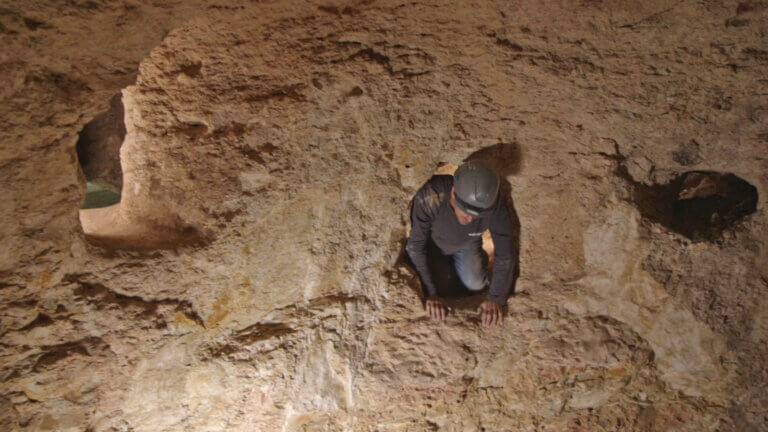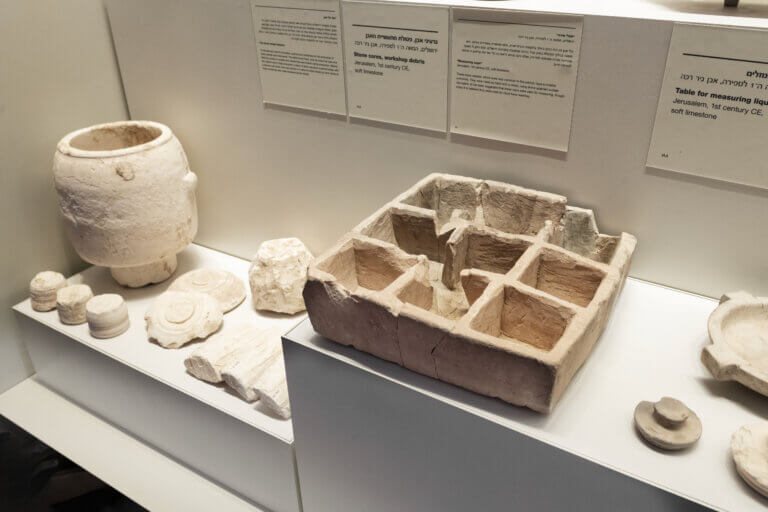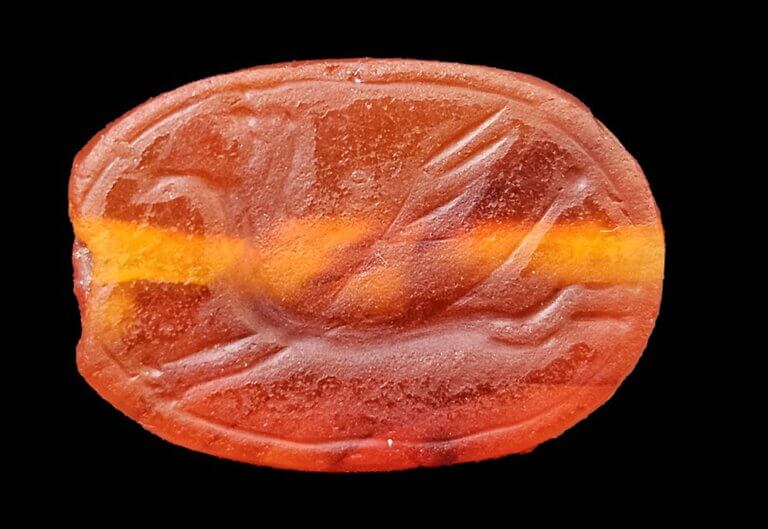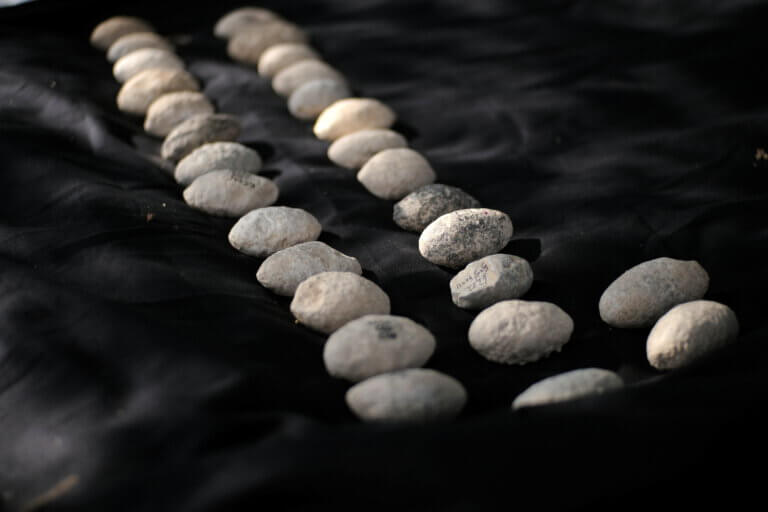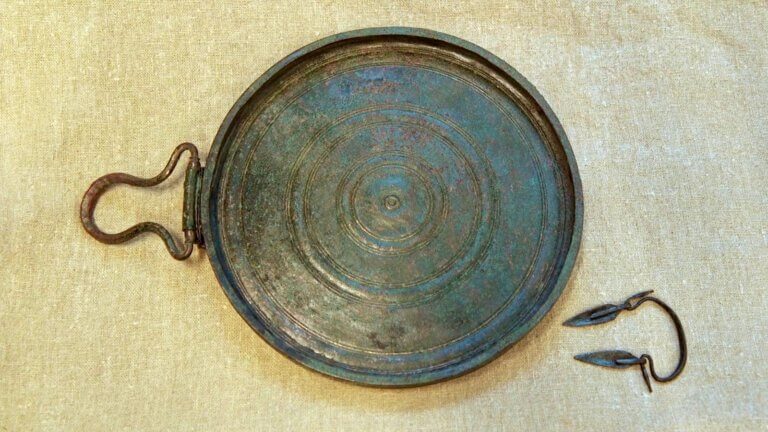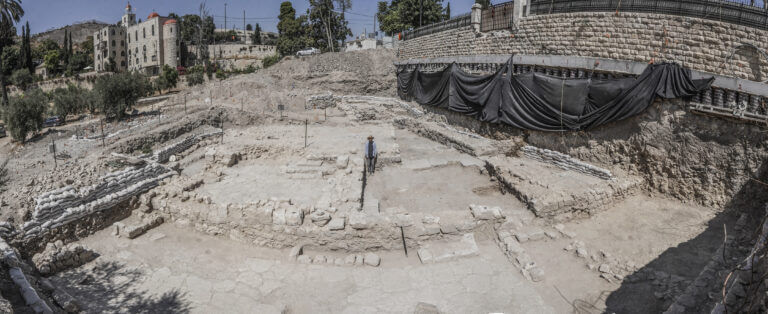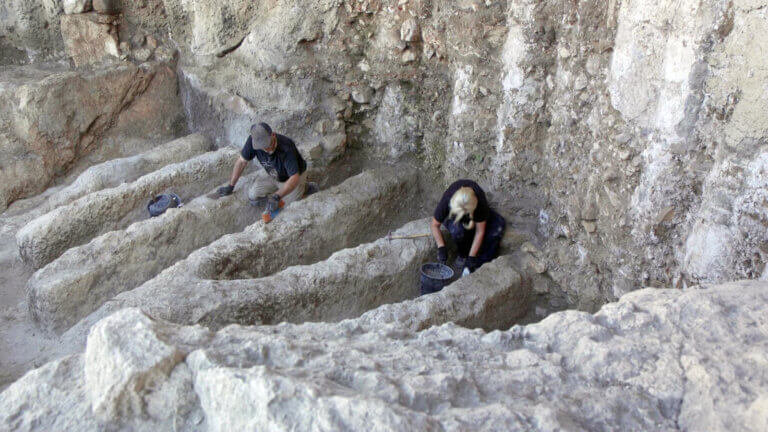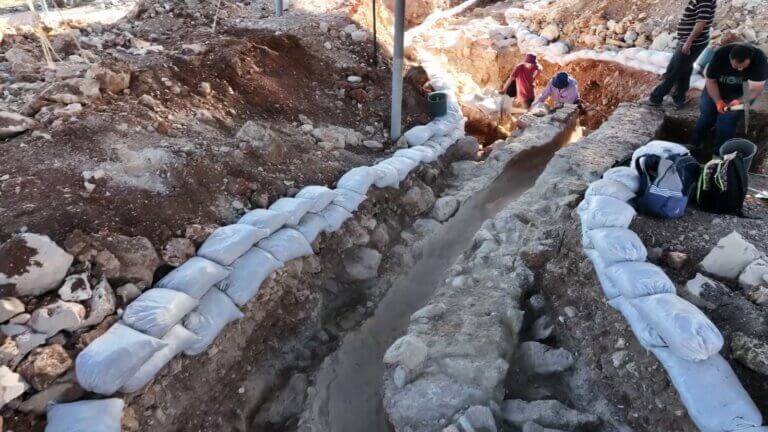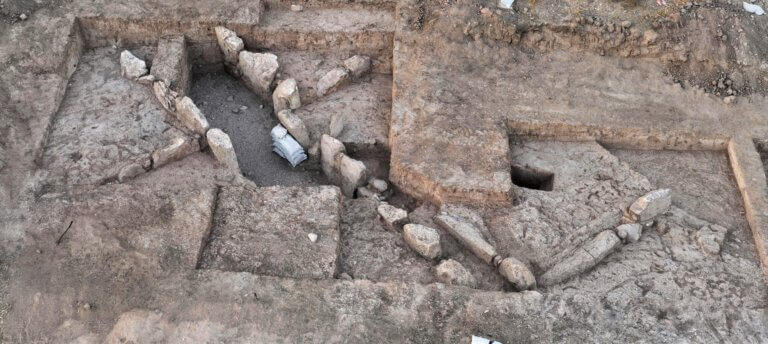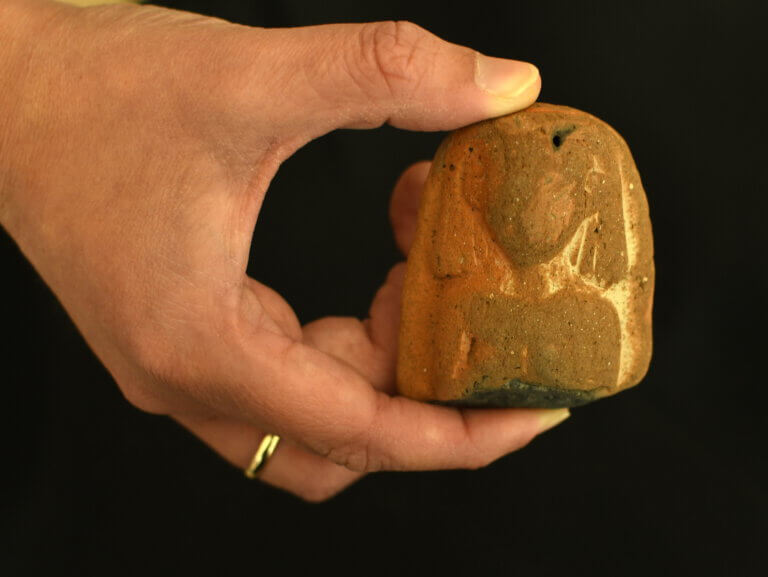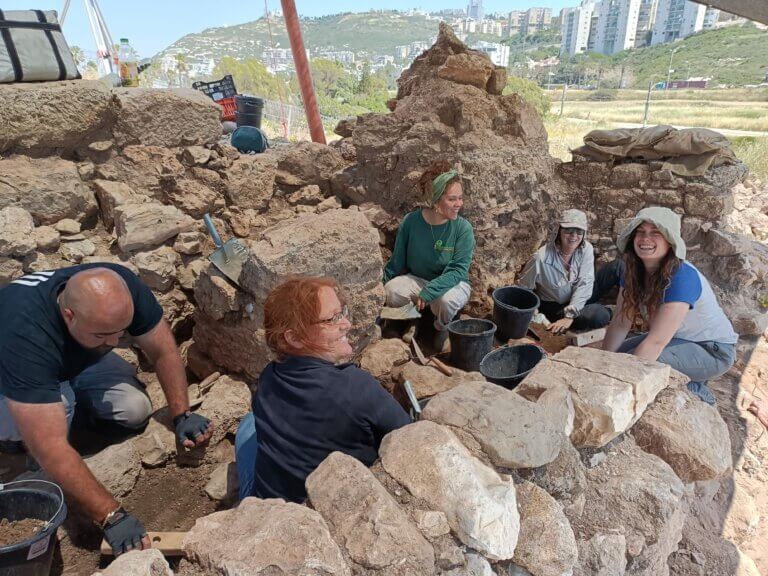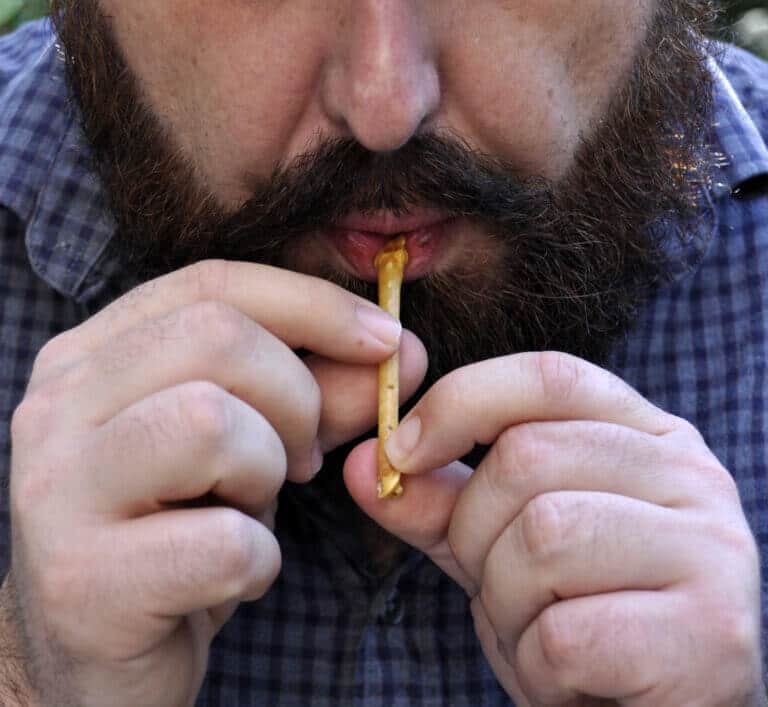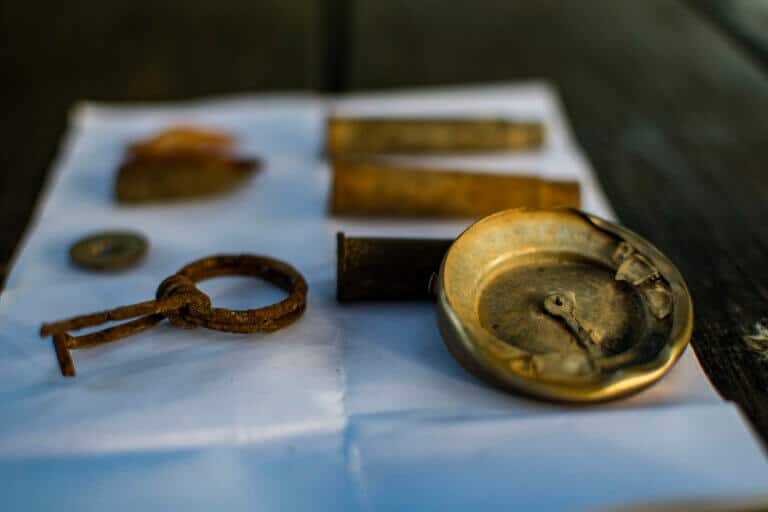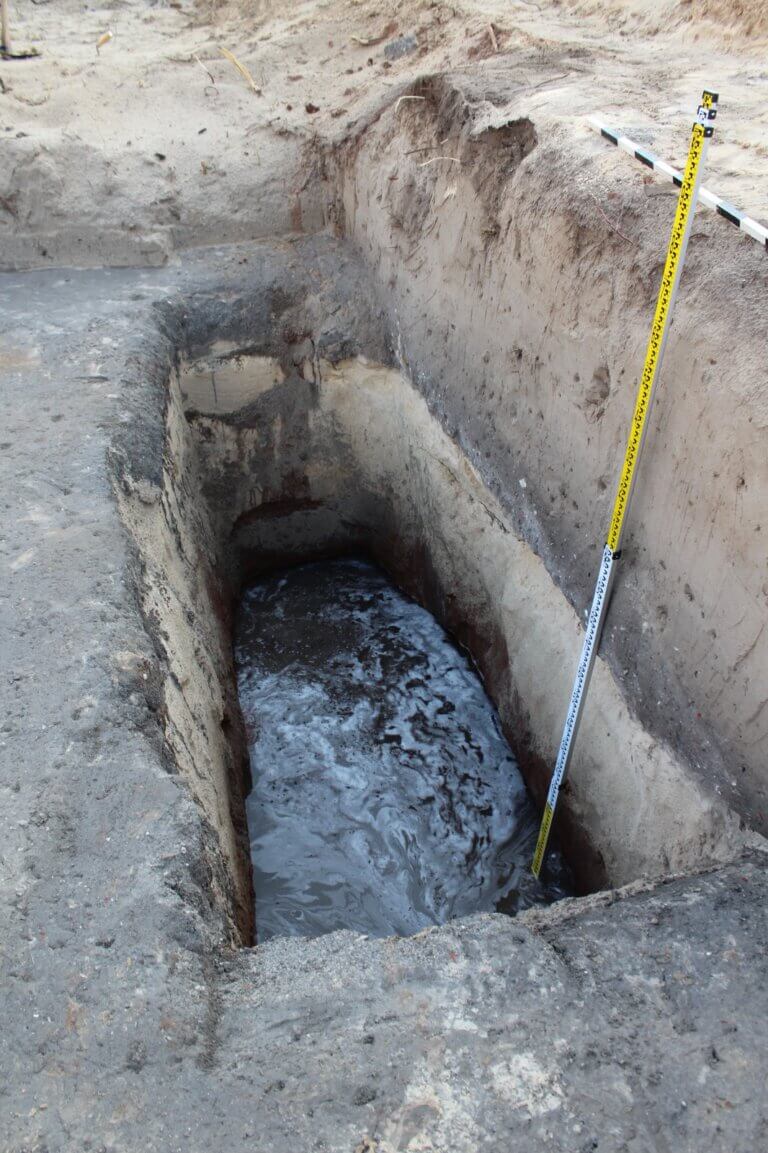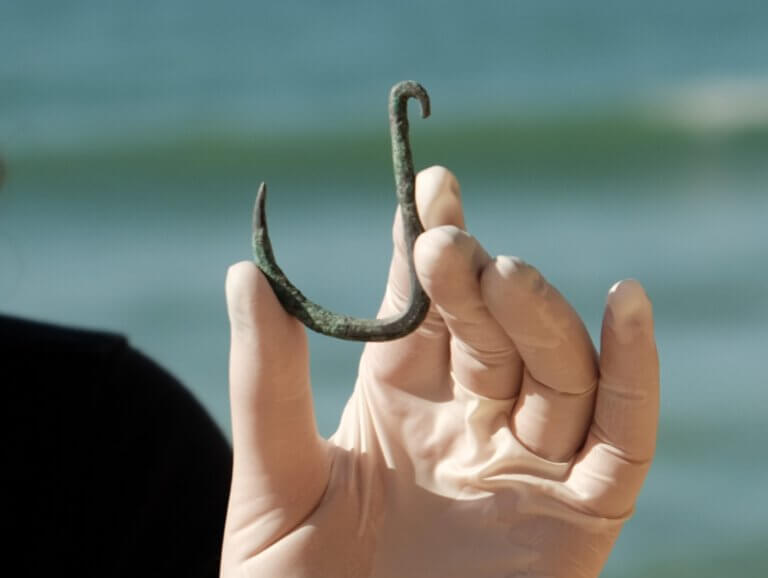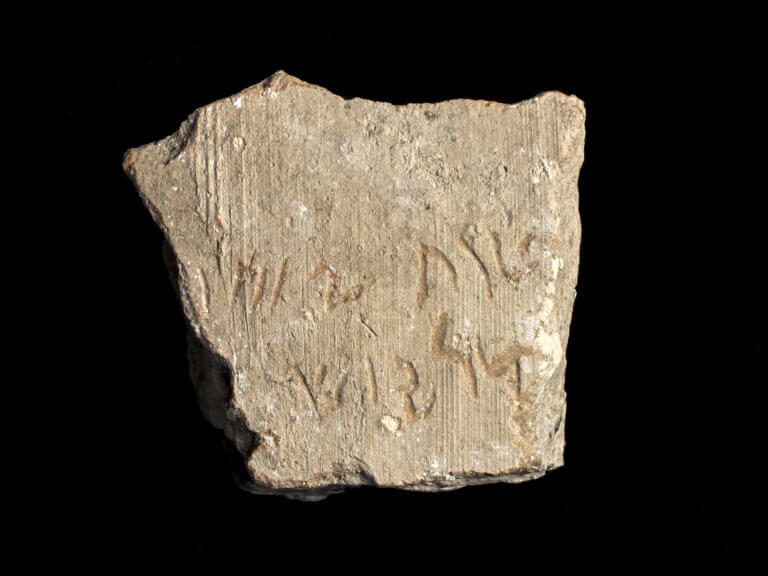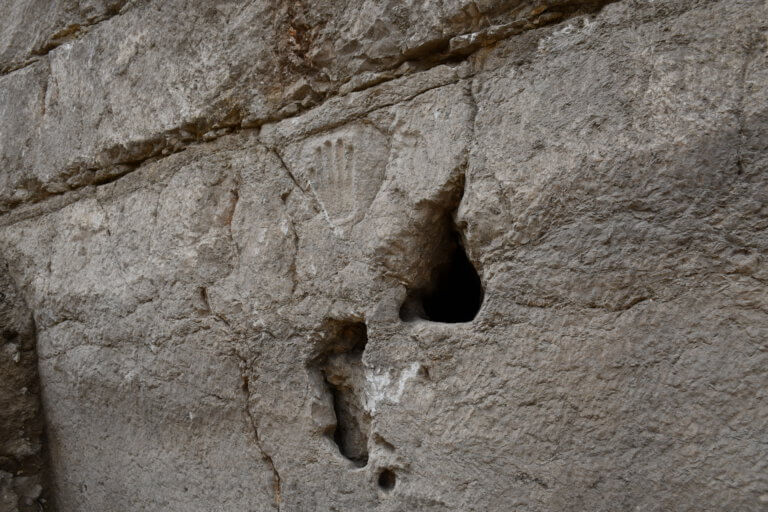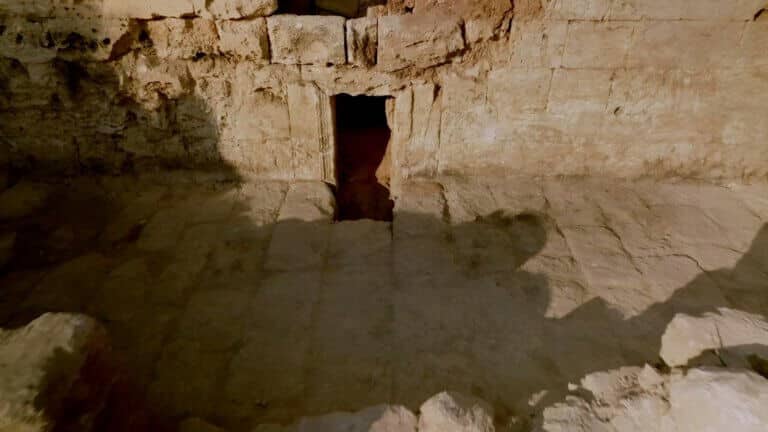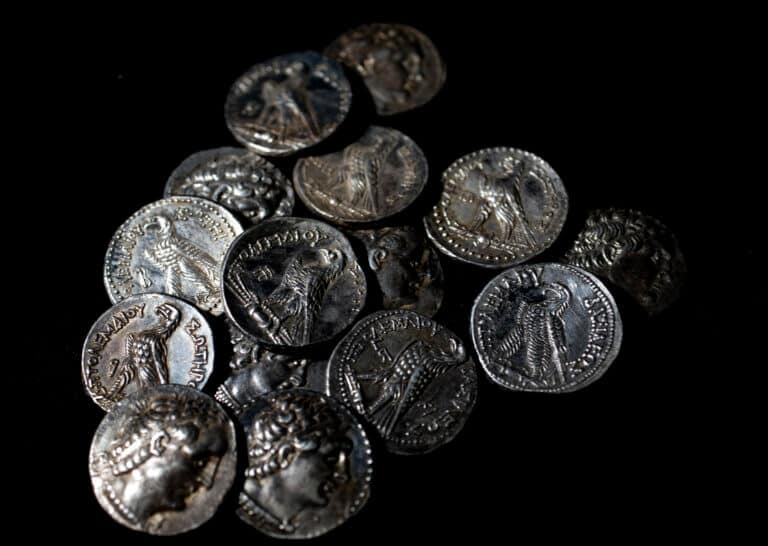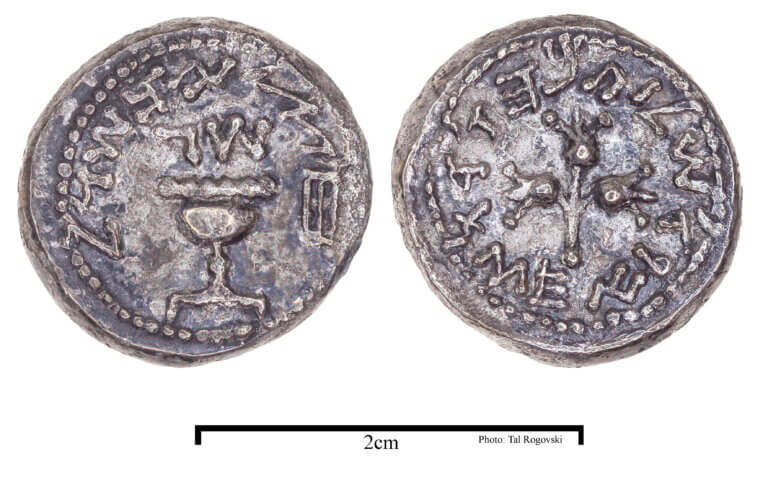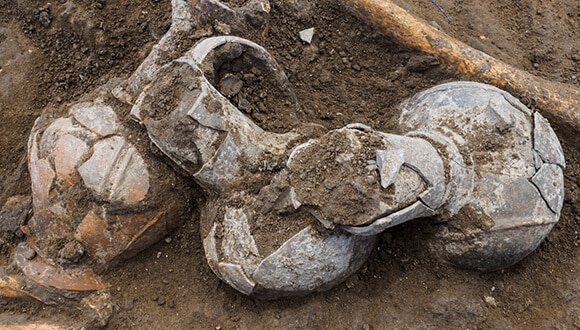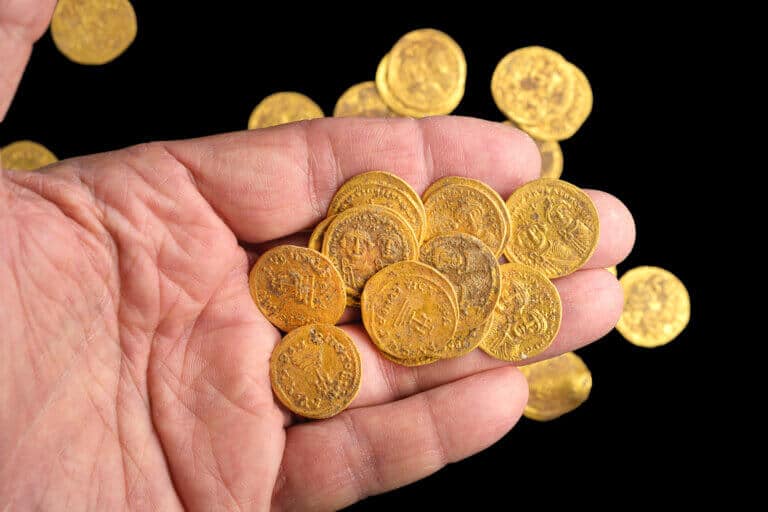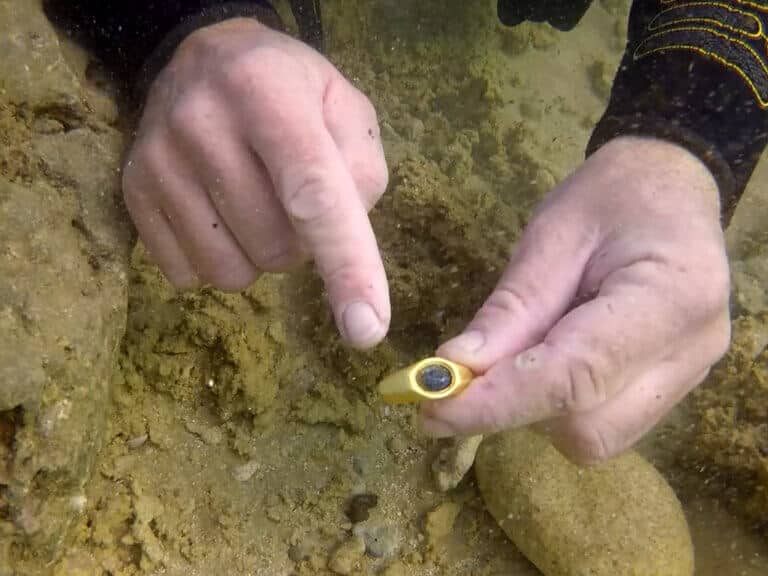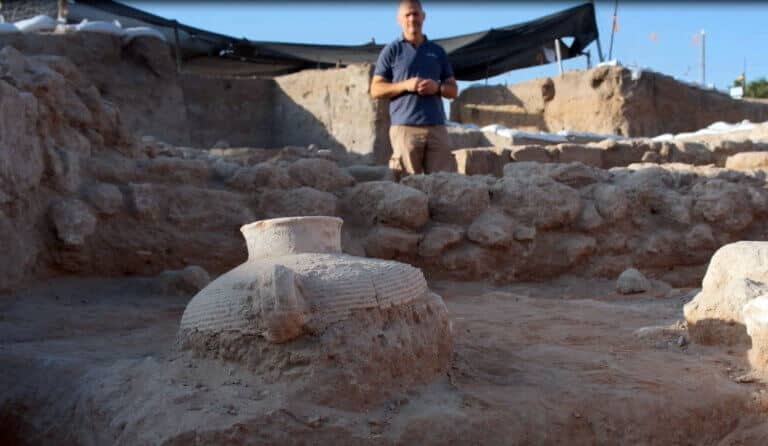Hayadan > Israel Antiquities Authority
Israel Antiquities Authority
- Israel Antiquities Authority Archeology
- April 4, 2024
- 4 תגובות
The world-important prehistoric site, the Ovadia National Park in Emek Hirdam, which is the oldest in Israel (about 1.6 million years ago) and one of the oldest in the world outside the African continent, was inaugurated. * There was a meeting between animals from Africa and Europe
- Israel Antiquities Authority Archeology
- March 19, 2024
- No comments
A ring discovered in a cave in Khokuk that was used by Bar Kochba soldiers to hide from the Romans. Photo: Dafna Gazit, Israel Antiquities Authority
- Israel Antiquities Authority Archeology
- February 23, 2024
- 3 תגובות
- Avi Blizovsky
- February 8, 2024
- 5 תגובות
The amulet may testify to the presence of an Assyrian (or perhaps Babylonian) official in the place almost 2,800 years ago * The rare find was transferred to the state treasures and the traveler received a certificate of appreciation from the Antiquities Authority
- Israel Antiquities Authority Archeology
- November 23, 2023
- One response
A study by the Antiquities Authority, recently published in the journal Atiqot 111, reveals the earliest evidence of organized fighting and arming in the Land of Israel in particular and the southern Levant in general
- Israel Antiquities Authority Archeology
- September 28, 2023
- One response
A grave in which the remains of a woman were discovered with a rare mirror next to her opens an extraordinary window into customs that were 'imported' to Israel with the Hellenistic occupation * It seems that the person buried was a young woman of Greek origin, who accompanied a senior member of the Hellenistic army or government on his journey through Israel
- Bar-Ilan University
- September 2, 2023
Annette Landes Nagar is an archaeologist-digger and Bar Ilan President Fellow, whose research has yielded important discoveries in the Jerusalem area
- Israel Antiquities Authority Archeology
- August 31, 2023
- One response
The canal facilities, the likes of which have not yet been discovered in Israel, were in use about 2,800 years ago - during the time of the First Temple; According to the researchers from the Antiquities Authority and Tel Aviv University, "it is possible that the canals were used to soak some product. The central location of the canal facilities shows that the product produced in them was associated with a palace or a temple.
- Israel Antiquities Authority Archeology
- August 29, 2023
- No comments
The length of the Amma section is about 300 meters, and it was uncovered in the excavations of the Antiquities Authority before the expansion of the neighborhood, funded by the "Arim" company for urban development and in the framework of the establishment of schools on the site at the initiative of the Jerusalem Municipality * Among other things, a coin from the second period of the great revolt of the Jews against the Romans was found in the Amma infrastructure - A few years before the destruction of the Second Temple
- Israel Antiquities Authority Archeology
- August 16, 2023
- No comments
In an excavation by the Antiquities Authority prior to the construction of a Mekorot company water line in the Kiryat Gat area, an ancient gate was discovered, approximately 5,500 years old * This gate was part of the fortification system of one of the most important mounds for understanding the beginning of urbanization
- Israel Antiquities Authority Archeology
- July 2, 2023
- No comments
She handed it over to the State Treasury and received a certificate of appreciation from the Antiquities Authority for demonstrating good citizenship
- Israel Antiquities Authority Archeology
- June 21, 2023
- 5 תגובות
Tel Shekmona was the largest crimson factory in the area during the Iron Age, under the control of the Kingdom of Israel and the one that apparently supplied the prestigious crimson color to the Temple in the neighboring Kingdom of Judah
- Israel Antiquities Authority Archeology
- June 10, 2023
- One response
A new study published today (Fri) in the prestigious scientific magazine Nature Scientific Report suggests that tiny flutes made from the wing bones of waterfowl were used to produce sounds imitating the sounds of birds of prey
- Israel Antiquities Authority Archeology
- April 25, 2023
- No comments
The compass, as well as Bren type machine gun pods, were uncovered in an archaeological study by Dr. Rafi Lewis from Ashkelon Academic College and Haifa University and Il Marco from the Antiquities Authority * According to the researchers, the compass belonged to the platoon commander or one of the two patrols who fought in force * The study may shed light on the battle in which they were killed all warriors
- Bar-Ilan University
- April 24, 2023
The system from the tenth century AD, in the Islamic period is the first significant development of agriculture in the sand in human history
- Israel Antiquities Authority Archeology
- March 30, 2023
- No comments
The hook, which appears to have been used for hunting sharks, was discovered in the excavations of the Israel Antiquities Authority before the establishment of the Agami neighborhood in Ashkelon * The unique find will be presented for the first time at the 48th Archaeological Congress, in the organization of the Israel Antiquities Authority, the Society for the Exploration of Israel and its Antiquities, and the Israel Archaeological Society
- Israel Antiquities Authority Archeology
- March 3, 2023
- 5 תגובות
The 2500-year-old pottery on which the inscription was engraved in Aramaic script was discovered by travelers by chance in Tel Lakish National Park * It seems that this is a "note" to confirm the delivery or receipt of goods * The rare ostracon was studied by Sa'ar Ganor from the Antiquities Authority and Dr. Hagai Meshgav from the Hebrew University of Jerusalem , and their research will be published in the journal "Antiquities"
- Israel Antiquities Authority Archeology
- January 26, 2023
- No comments
The new parts of the defense system on the walls of Old Jerusalem against Crusader attacks were discovered during archaeological excavations by the Antiquities Authority on Sultan Suleiman Street, prior to the laying of infrastructure at the initiative of the Jerusalem Municipality through the Moriah Jerusalem Development Company
- Israel Antiquities Authority Archeology
- December 21, 2022
- No comments
The courtyard was uncovered as part of the 'Road of the Kings of Judah' project led by the Antiquities Authority, the Jerusalem Ministry and Heritage, and the Kimat Israel Fund * Evidence of the sanctification of the place over hundreds of years was uncovered at the site, indicating the burial of a significant figure who belonged to an affluent family in the Second Temple
- Israel Antiquities Authority Archeology
- December 14, 2022
- 3 תגובות
In an excavation in a cave in the Nahal Darga Reserve, a rare treasure was discovered - a wooden box containing 15 silver coins from the time of King Antiochus IV *It seems that the person who buried the box in the cave fled to it, hoping to collect his property at the end of the rebellion
- Israel Antiquities Authority Archeology
- December 13, 2022
- One response
This is the third coin of this type to be discovered in excavations in Jerusalem and one of the few ever discovered in archaeological excavations.
- Israel Antiquities Authority Archeology
- October 4, 2022
The remains of the opium were found in pottery excavated at Tel Yehud, in an excavation conducted by Ariola Yakoel on behalf of the Antiquities Authority. The pots that contained the opium date to the 14th century BC, and they were found in the tombs of Canaanites and were apparently used as part of the local cult of the dead
- Israel Antiquities Authority Archeology
- October 4, 2022
- No comments
The treasure is evidence of a dramatic moment in the country's history - the conquest of the Byzantine Empire by the Umayyad House. Archaeologist of the Israel Antiquities Authority, Dr. Yoav Lerer: "Whoever buried the coins in a wall must have performed a miracle on his soul in the hope of returning and collecting his property, but he was not successful."
- Israel Antiquities Authority Archeology
- January 6, 2022
- No comments
A maritime archaeological survey by the Antiquities Authority in Caesarea revealed a treasure of two ancient shipwrecks, including hundreds of silver coins, gold and silver rings, rare decorated gems, an eagle statuette, bells, and parts of a ship. According to the researchers of the Maritime Archeology Unit at the Antiquities Authority: "The findings tell the story of two ships that were wrecked, along with their passengers, at different times, probably while trying to anchor or find shelter from a storm."
- Israel Antiquities Authority Archeology
- December 2, 2021
- 3 תגובות
*The discovery was made in the huge excavation of the Antiquities Authority in Yavne, funded by the Israel Lands Authority and in cooperation with the Yavne municipality on the occasion of the expansion of the city. Fragments of stone vessels made of Kirton were discovered in the building, indicating a Jewish presence.


